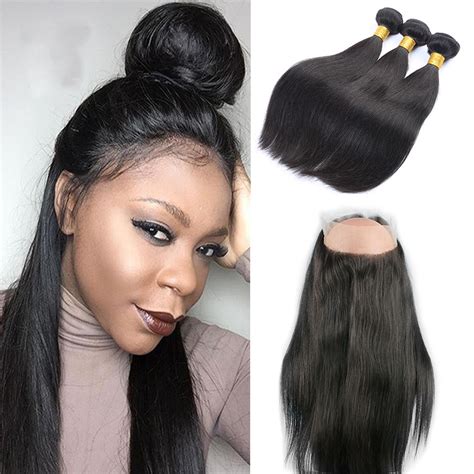In the realm of hair restoration, closure and frontal systems have emerged as game-changers, offering unparalleled versatility and natural-looking results. This comprehensive guide delves into the intricacies of these systems, exploring their benefits, drawbacks, and innovative applications.

What is a Closure System?
A closure system consists of a small, circular or oval-shaped hairpiece that is attached to the scalp using adhesive or clips. These systems offer a quick and easy way to conceal bald spots or add volume to thinning hair. Closures come in a variety of sizes, ranging from 2×4 inches to 6×6 inches, and can be matched to the wearer’s natural hair color and texture.
What is a Frontal System?
A frontal system is a larger hairpiece that extends from the forehead to the nape of the neck. Unlike closures, frontals provide full coverage and can be used to create a variety of hairstyles, including buns, ponytails, and braids. They offer a more natural appearance than closures, but they can also be more expensive and time-consuming to install.
Benefits of Closure and Frontal Systems
1. Natural Appearance: Both closures and frontals are designed to seamlessly blend with natural hair, creating a realistic and undetectable look.
2. Versatility: Closure and frontal systems allow for endless styling possibilities, empowering wearers to experiment with different looks.
3. Confidence Boost: These systems can significantly improve the wearer’s self-confidence by concealing hair loss and restoring a youthful, vibrant appearance.
Drawbacks of Closure and Frontal Systems
1. Cost: Closure and frontal systems can be expensive, especially for high-quality materials and professional installation.
2. Maintenance: These systems require regular cleaning, maintenance, and reattachment, which can add to the overall cost and time commitment.
3. Potential for Damage: Improper installation or removal of closure and frontal systems can damage natural hair or the scalp.
Creative Applications of Closure and Frontal Systems
1. Partial Hair Loss: Closures and frontals can be used to conceal partial hair loss, such as thinning or bald spots, without the need for a full hair replacement system.
2. Hairline Enhancement: These systems can be used to create a more defined hairline or to extend the hairline of a receding hairline.
3. Hair Thickening: Closures and frontals can be added to natural hair to add volume and density, creating a fuller and more youthful appearance.
4 Key Tables
Table 1: Types of Closure Systems
| Type | Size | Shape | Attachment |
|---|---|---|---|
| Lace Closure | 4×4 inches – 6×6 inches | Oval or circle | Adhesive or clips |
| Silk Closure | 4×4 inches – 6×6 inches | Oval or circle | Adhesive |
| Mono Closure | 4×4 inches – 6×6 inches | Oval or circle | Monofilament base |
Table 2: Types of Frontal Systems
| Type | Size | Attachment |
|---|---|---|
| Lace Frontal | 13×4 inches – 13×6 inches | Adhesive |
| Silk Frontal | 13×4 inches – 13×6 inches | Adhesive |
| Mono Frontal | 13×4 inches – 13×6 inches | Monofilament base |
Table 3: Cost of Closure and Frontal Systems
| System Type | Material | Price Range |
|---|---|---|
| Closure | Lace | $100 – $300 |
| Closure | Silk | $150 – $400 |
| Closure | Mono | $200 – $500 |
| Frontal | Lace | $300 – $600 |
| Frontal | Silk | $400 – $700 |
| Frontal | Mono | $500 – $800 |
Table 4: Maintenance of Closure and Frontal Systems
| Task | Frequency |
|---|---|
| Washing and conditioning | Weekly |
| Deep conditioning | Bi-weekly |
| Adhesive removal and reattachment | Every 2-3 weeks |
| Professional maintenance | Every 6-8 weeks |
FAQs
1. What is the difference between a closure and a frontal?
A closure is a small hairpiece that conceals bald spots, while a frontal is a larger hairpiece that provides full coverage.
2. How long do closure and frontal systems last?
With proper care and maintenance, closure and frontal systems can last 6-12 months or longer.
3. Can I wear closure and frontal systems while sleeping?
Yes, but it is recommended to wear a silk or satin bonnet or scarf to protect the hair and extend the life of the system.
4. Can I dye closure and frontal systems?
Yes, but it is important to use hair-specific dyes and follow the instructions carefully to avoid damage.
5. Can I swim or exercise with closure and frontal systems?
It is not recommended to swim or exercise vigorously with closure and frontal systems, as the water and sweat can loosen the adhesive and damage the system.
6. What are the risks of using closure and frontal systems?
Improper installation or removal can damage natural hair or the scalp. Additionally, excessive use of adhesive can cause skin irritation.
Conclusion
Closure and frontal systems offer a transformative solution for individuals seeking to enhance their hair appearance and boost their confidence. With proper care and maintenance, these systems can provide a natural-looking and versatile hair solution for years to come. By embracing the latest advances in hair restoration technology, individuals can unlock the freedom to experiment with different hairstyles and achieve their desired hair aesthetic.
